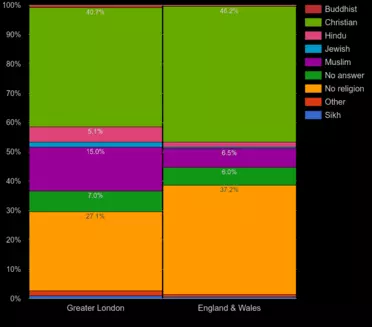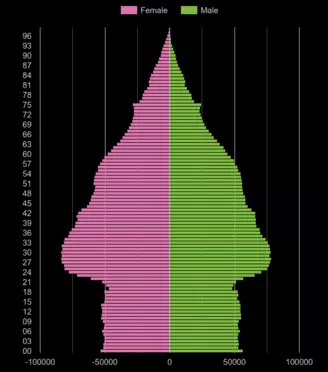London Building Construction Age
2025-02-12
As of the end of 2024, England and Wales had approximately 21.2 million residential housing units with Energy Performance Certificates (EPCs), which represents a significant portion of the 24.8 million households recorded in the Census 2021. Among these properties, 85% fall within an estimated construction age band. Let’s explore the details of London buildings.
Housing Age Distribution in London
London contains 2.92 million housing units with an estimated construction age band. While we cannot determine the exact average age of the units due to the presence of only age bands and the absence of precise ages for most properties, the high proportion of housing units with known age bands allows us to create a home age index map. This map visualizes where older and newer buildings are located.

Most houses built before 1900 are found in Kensington and Westminster, which account for nearly one-fourth of all housing units in London from that period. 47.3% (46.7k) of homes in Kensington and Chelsea were built before 1900, 23.2% (23k) between 1900-1929, while the remaining 29.5% were built after 1930.
In contrast, most developments since 1996 have taken place along the banks of the Thames River, particularly in the E and SE postcode areas, such as E14, E16, SE16 and SE28. Nearly 21000 units (53.1%) units in E14 were built after 1996, along with 7000 (40.5%) in E16.
Breakdown of Housing by Age Band
The following table summarizes the distribution of housing stock by age band:
| Build Age | London | England & Wales |
|---|---|---|
| 2007+ | 4.3% | 4.0% |
| 1996-06 | 8.1% | 9.8% |
| 1983-95 | 7.6% | 11.0% |
| 1967-82 | 12.7% | 18.7% |
| 1950-66 | 11.7% | 17.3% |
| 1930-49 | 20.0% | 13.4% |
| 1900-29 | 23.0% | 15.1% |
| Pre-1900 | 12.6% | 10.7% |
Notably, 55% of homes in London were built before 1950. In comparison, 39.2% of homes across England and Wales were built before 1950, and this figure drops to 36% when looking specifically at areas outside of London.
Housing Stock and National Comparisons
Flats
- In London, 16% of flats were built after 1995, and 24.3% were constructed after 1982.
- Across England and Wales, 20.4% of flats were built after 1995, and 32.5% were built after 1982. Excluding London, these numbers rise to 22.5% and 36.5%, respectively.
| Build age | London | England & Wales |
|---|---|---|
| 2007+ | 5.8% | 7.0% |
| 1996-06 | 10.1% | 13.4% |
| 1983-95 | 8.3% | 12.2% |
| 1967-82 | 14.6% | 19.8% |
| 1950-66 | 12.0% | 13.9% |
| 1930-49 | 13.0% | 7.3% |
| 1900-29 | 22.1% | 15.2% |
| Pre-1900 | 14.0% | 11.3% |
Houses
- The availability of newer houses in London is considerably lower, with only 5.3% built after 1995 and 11.5% built after 1983.
- In contrast, 21% of houses in England and Wales were built after 1983, highlighting a greater presence of newer properties outside the capital.
| Build age | London | England & Wales |
|---|---|---|
| 2007+ | 1.1% | 2.5% |
| 1996-06 | 4.2% | 8.1% |
| 1983-95 | 6.2% | 10.4% |
| 1967-82 | 8.9% | 18.2% |
| 1950-66 | 11.0% | 18.9% |
| 1930-49 | 33.9% | 16.4% |
| 1900-29 | 24.7% | 15.0% |
| Pre-1900 | 9.9% | 10.4% |
Conclusion
Compared to the rest of England and Wales, London has a lower proportion of recently built houses, highlighting the city’s reliance on older structures and the limited availability of new residential developments. This disparity underscores the challenges in meeting housing demand in the capital, emphasizing the need for strategic urban planning and sustainable development.
Next for London:
- London Census 2021

- London crime statistics

- London house prices

- London house prices per square metre

- London population

- London salary and unemployment

Contains public sector information licensed under the Open Government Licence v3.0.. Datasource: Energy Performance of Buildings Data .